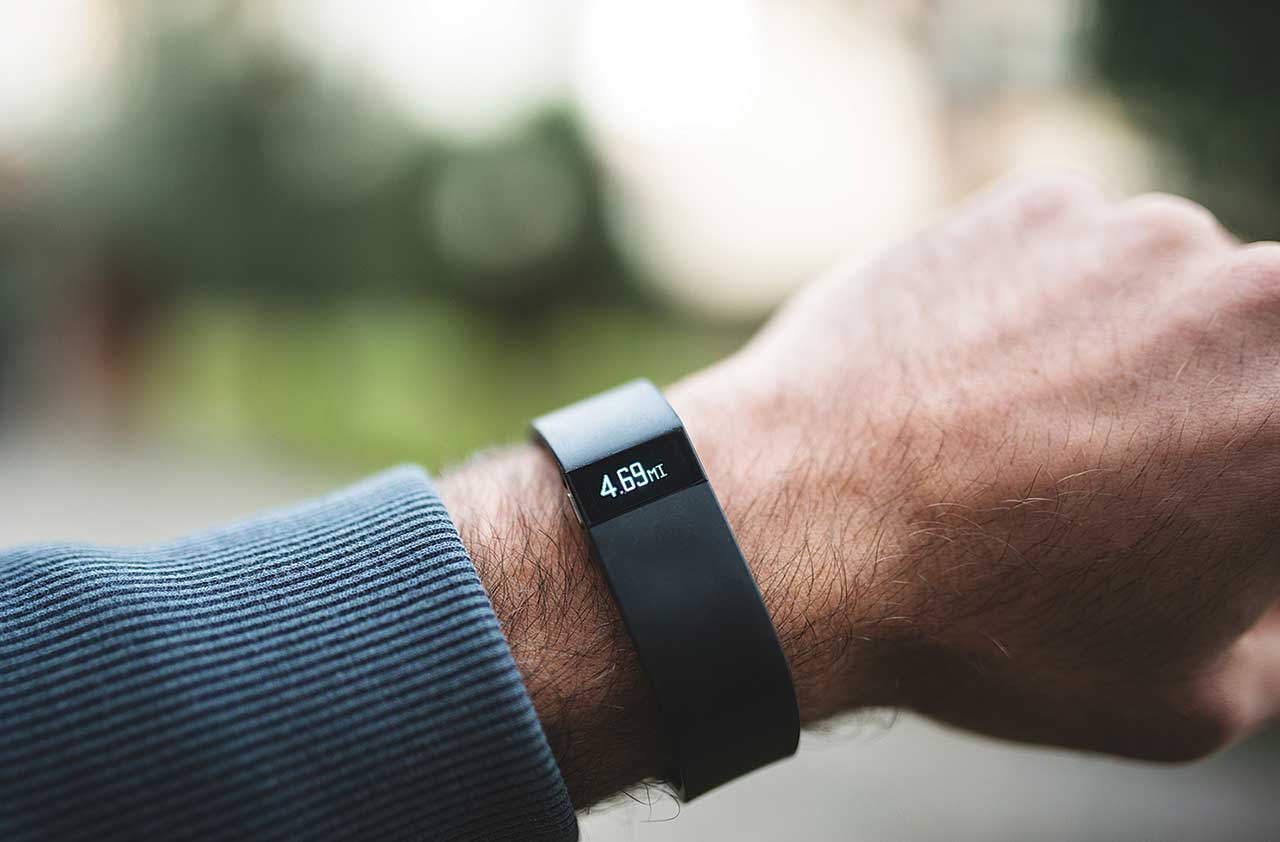Do Fitness Trackers Really Improve Your Health?
The devices aren't terribly accurate, but that may be beside the point: getting you out and about.


Millions of Americans now wear fitness bands on their wrists to count their steps daily. Some employers are using fitness trackers to set goals—and rewards—for employees. Health and life insurers are offering premium discounts for wearing one. School systems are even using them to enable self-directed physical education programs.
How accurate are they? Fitness bands contain an accelerometer, which tracks movement in every direction to calculate the number of steps you’ve taken. But studies show that over the course of a day, many trackers have error rates of 10% to 20%. Tufts University’s Health & Nutrition Letter suggests you verify that your stride-length setting is correct by going to a track with the exact distance marked and counting your steps as you walk it. If you walk, say, 100 feet in 40 steps, divide 100 by 40. You have a stride length of about 2.5 feet.
Most fitness bands are on track when it comes to counting steps when you’re walking, running or climbing stairs—usually coming within 1% to 4% of your actual step count, says Alex Montoye, an assistant professor at Alma College who studies wearables. The devices are also good at not awarding credit for stationary activities with a lot of wrist movement, such as typing or shuffling papers.
From just $107.88 $24.99 for Kiplinger Personal Finance
Become a smarter, better informed investor. Subscribe from just $107.88 $24.99, plus get up to 4 Special Issues

Sign up for Kiplinger’s Free Newsletters
Profit and prosper with the best of expert advice on investing, taxes, retirement, personal finance and more - straight to your e-mail.
Profit and prosper with the best of expert advice - straight to your e-mail.
But the trackers fall short when it comes to measuring your activity as you’re doing household chores, such as sweeping, washing dishes, cleaning or gardening. According to Montoye’s recent study at Ball State University, most fitness bands underestimate the amount of calories burned when doing tasks around the house by 27% to 34%. Also worth noting: The bands often fail to capture your steps when you’re pushing a grocery cart, lawn mower or baby stroller; if you want credit for those exertions, consider slipping the band into a pants or skirt pocket.
Before you choose a fitness tracker, consider the features you’re looking for. A simple step counter, such as the Fitbit Zip or Jawbone UP Move, will run you $50 to $60. At the high end, the Fitbit Surge ($250) will not only count steps but also track your heart rate and sleep patterns—plus it offers GPS tracking and has a 1.25-inch screen to alert you to text messages sent to your smartphone. If you want to measure your heart rate and monitor your sleep but don’t need the other advanced features, consider the Fitbit Charge HR ($150) and the Jawbone UP3 ($130). (The Apple Watch has a built-in workout application to track your activity, and you can load a sleep-monitoring app from the iTunes store.)
Virtual coaching. Despite missteps when it comes to recording your activity, wearable trackers can be useful for improving your daily workout. Because the majority of adults’ exercise comes in the form of walking, says Montoye, your step count should provide a good ballpark of your daily activity.
And for many fitness-band wearers, the precise number of steps logged matters less than the motivation to get up and move around. The bands can fuel competition to outwalk friends and encourage couples to take an evening walk. According to Harvard Women’s Health Watch, numerous studies have focused on activity levels of women older than 50. Those who wore fitness trackers significantly increased the time they spent doing moderate to vigorous activity.
Profit and prosper with the best of Kiplinger's advice on investing, taxes, retirement, personal finance and much more. Delivered daily. Enter your email in the box and click Sign Me Up.

-
 6 Champagne Problems Successful Retirees Face
6 Champagne Problems Successful Retirees FaceWhat do you do if your biggest financial threat is simply having too much of a good thing — money?
-
 Congress is Set for a Busy Winter
Congress is Set for a Busy WinterThe Kiplinger Letter The Letter editors review the bills Congress will decide on this year. The government funding bill is paramount, but other issues vie for lawmakers’ attention.
-
 A Portfolio Checklist If You're Planning to Retire in 2027
A Portfolio Checklist If You're Planning to Retire in 2027Are you planning on retiring in 2027? This portfolio checklist will help put you on the right path.
-
 9 Types of Insurance You Probably Don't Need
9 Types of Insurance You Probably Don't NeedFinancial Planning If you're paying for these types of insurance, you may be wasting your money. Here's what you need to know.
-
 Amazon Resale: Where Amazon Prime Returns Become Your Online Bargains
Amazon Resale: Where Amazon Prime Returns Become Your Online BargainsFeature Amazon Resale products may have some imperfections, but that often leads to wildly discounted prices.
-
 What Does Medicare Not Cover? Eight Things You Should Know
What Does Medicare Not Cover? Eight Things You Should KnowMedicare Part A and Part B leave gaps in your healthcare coverage. But Medicare Advantage has problems, too.
-
 Roth IRA Contribution Limits for 2026
Roth IRA Contribution Limits for 2026Roth IRAs Roth IRAs allow you to save for retirement with after-tax dollars while you're working, and then withdraw those contributions and earnings tax-free when you retire. Here's a look at 2026 limits and income-based phaseouts.
-
 Four Tips for Renting Out Your Home on Airbnb
Four Tips for Renting Out Your Home on Airbnbreal estate Here's what you should know before listing your home on Airbnb.
-
 Five Ways to a Cheap Last-Minute Vacation
Five Ways to a Cheap Last-Minute VacationTravel It is possible to pull off a cheap last-minute vacation. Here are some tips to make it happen.
-
 How Much Life Insurance Do You Need?
How Much Life Insurance Do You Need?insurance When assessing how much life insurance you need, take a systematic approach instead of relying on rules of thumb.
-
 When Does Amazon Prime Day End in October? Everything We Know, Plus the Best Deals on Samsonite, Samsung and More
When Does Amazon Prime Day End in October? Everything We Know, Plus the Best Deals on Samsonite, Samsung and MoreAmazon Prime The Amazon Prime Big Deal Days sale ends soon. Here are the key details you need to know, plus some of our favorite deals members can shop before it's over.